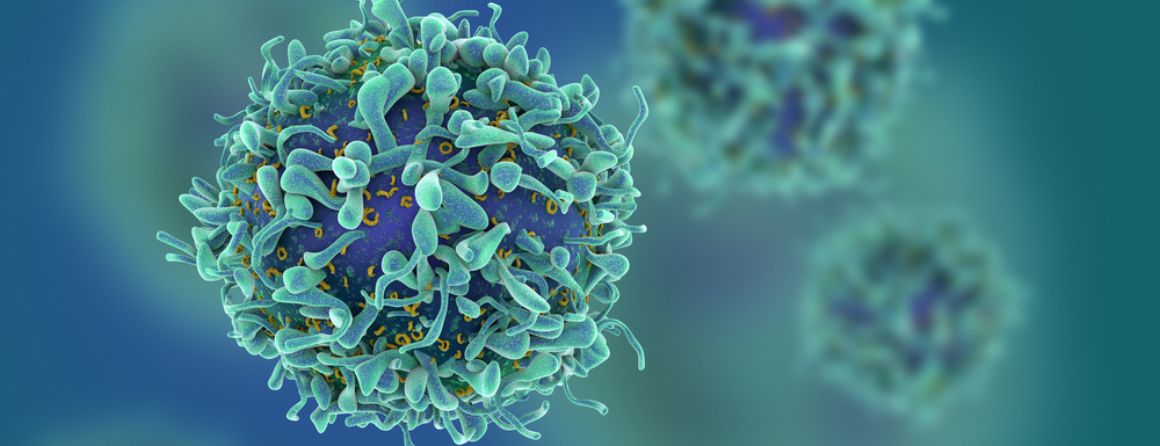Discovery could lead to more treatments to prevent cancer and infectious diseases

Researchers have cracked how a particular type of immune cell develops in the body and protects against infection and disease. And the discovery could help in the development of more preventive treatments, according to a new study.
The research, led by Murdoch Children’s Research Institute and Federation University Australia, has uncovered how these specialised white blood cells operate and can produce an immune response.
Associate Professor Dan Pellicci said by understanding the function of these cells, they could be harnessed to help prevent cancer and highly infectious diseases such as COVID-19, Strep A and tuberculosis.
Published in Science Immunology,, the study involved samples donated to the Melbourne Children’s Heart Tissue Bank from heart surgery patients up to 16 years old. From these samples, the researchers looked at the role of ‘gamma delta T cells’ within the thymus gland, a small organ located within the chest, close to the heart.
Associate Professor Pellicci said the study showed for the first time how this organ produced these infection-fighting immune cells.
“We have large numbers of these specialised cells in our blood and tissues, which accumulate as we become adults. Until our study, it was unclear how these cells develop in the body,” he said.
“We have shown how these cells are trained over three stages, similar to receiving a primary, secondary and tertiary education, and fully formulate within the thymus. Following this education, the cells are ready to enter the rest of the body and are completely capable of fighting infections.”
Associate Professor Pellicci said previous studies suggested that these immune cells were mainly derived in the liver during a baby’s development in the womb, but this research debunked that theory.
“Many experts assumed that after birth, the thymus played little role in the development of these cells as we age, but we now know this little unsung organ helps the body prepare for a lifetime of good health,” he said.
“The more we know about these cells the greater the likelihood of unlocking new ways to treat infectious diseases and cancer.”
Researchers from the University of Melbourne, The Fiona Elsey Cancer Research Institute, Federation University, Peter Doherty Institute for Infection and Immunity, Melbourne Centre for Cardiovascular Genomics and Regenerative Medicine, The Royal Children’s Hospital and the Walter and Eliza Hall Institute of Medical Research also contributed to the findings.
Publication: Louis Perriman, Naeimeh Tavakolinia, Sedigheh Jalali, Shou Li, Peter F Hickey, Daniela Amann-Zalcenstein, William Wing Ho, Tracey M Baldwin, Adam T Piers, Igor E Kostantinov, Jeremy Anderson, Edouard G Stanley, Paul V Licciardi, George Kannourakis, Shalin H Naik, Hui-Fern Koay, Laura K Mackay, Stuart P Berzins and Daniel G Pellicci, ‘A three-stage developmental pathway for human Vγ9Vδ2 T cells within the postnatal thymus,’ Science Immunology. DOI: 10.1126/sciimmunol.abo4365
*The content of this communication is the sole responsibility of the Murdoch Children’s and does not reflect the views of the NHMRC.
Available for interview
Associate Professor Daniel Pellicci, Murdoch Children’s, Group Leader, Cellular Immunology
Media contact for Murdoch Children's
Phone: +61 457 365 848
Email:
show email address
About Murdoch Children’s Research Institute
Murdoch Children's Research Institute is the largest child health research institute in Australia committed to making discoveries and developing treatments to improve child and adolescent health in Australia and around the world. They are pioneering new treatments, trialling better vaccines and improving ways of diagnosing and helping sick babies, children and adolescents. It is one of the only research institutes in Australia to offer genetic testing to find answers for families of children with previously undiagnosed conditions.
Funding
L.P. was supported by a Fiona Elsey Cancer Research Institute (FECRI) PhD Scholarship. D.G.P. was supported by CSL Centenary Fellowship. S.P.B. was supported by FECRI and a Dorevitch Cancer Research Fellowship. P.V.L. was supported by an NHMRC Career Development Fellowship (1146198). J.A. was supported by an Australian Postgraduate Award. H.-F.K. was supported by ARC DECRA Fellowship (DE220100830). D.G.P. was supported by NHMRC grants 1145373, 1140126, and 1122890. I.E.K. was supported by Heart Foundation Vanguard grant 102236.



